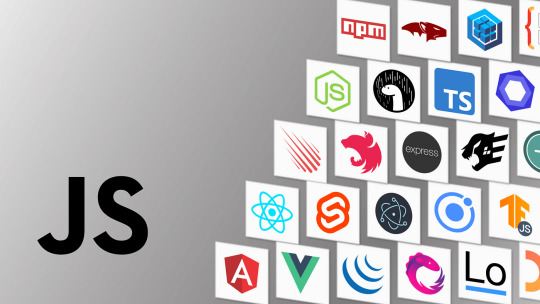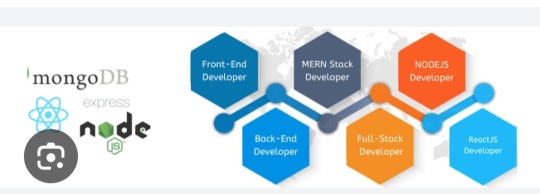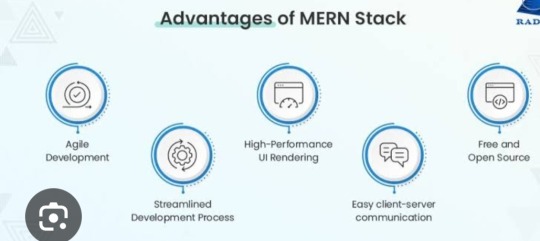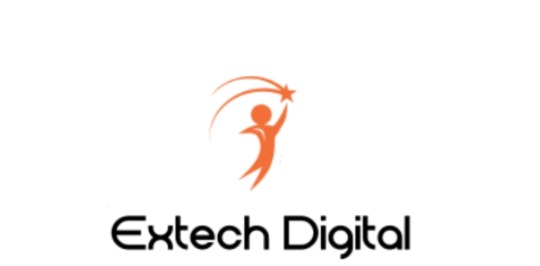#Best JavaScript Development Companies
Explore tagged Tumblr posts
Text
NodeJS excels in web development with its event-driven, non-blocking I/O model, making it ideal for handling concurrent connections and real-time applications like chat apps and live streaming. Its single-threaded architecture and use of JavaScript, both on the server and client side, allow for seamless development across the entire stack. NodeJS is especially suitable for startups and projects that require fast, scalable, and high-performance solutions.
Java, on the other hand, is renowned for its robustness, security, and platform independence. It is a mature technology with a vast ecosystem and a wealth of libraries and frameworks, such as Spring and Hibernate, which facilitate the development of large-scale, enterprise-grade applications. Java's multithreading capabilities and strong memory management make it well-suited for complex, resource-intensive applications where stability and reliability are paramount.
Choosing between NodeJS and Java ultimately depends on the specific needs of your project. For real-time, scalable applications with a need for rapid development, NodeJS is a compelling choice. For enterprise-level applications requiring high stability, security, and comprehensive tool support, Java is often the preferred technology.
#nodejs#javascript#web development#framework#best web development company in usa#software#node js development company#javaprogramming#programming
3 notes
·
View notes
Text
Top JavaScript Frameworks to Learn in 2025
In this blog, we shares about What are JavaScript Frameworks & the name of top JavaScript frameworks to help you find the most suitable framework for your development project. We are the top web development company in Rajkot. For best digital marketing services, Contact Aphonic Solutions, now!

#web development company in Rajkot#best digital marketing services#best web development services in India#Top JavaScript Frameworks#What are JavaScript Frameworks
0 notes
Text
Eloquent JavaScript 4th Edition
JavaScript continues to be the most dynamic programming language for web development, evolving with each new edition of its core learning resources. Among the most renowned books for mastering JavaScript, Eloquent JavaScript 4th Edition stands out as a must-read for developers who want to refine their skills and understand the language at a deeper level. The latest edition not only updates the…

View On WordPress
#Best Javascript Development Company#dynamic programming language#Eloquent JavaScript#Eloquent JavaScript 4th Edition#ES6+ features#Hire Javascript Developer#JavaScript Books#Javascript Development Services#JavaScript Features#JavaScript Fundamentals#JavaScript techniques
0 notes
Text
Why Tech Mind Developers Uses React Technology for Web Development

At Tech Mind Developers, we always strive to offer the most efficient, scalable, and user-friendly digital solutions. One of the technologies we frequently leverage for web development is React. React, developed by Facebook, has become one of the most popular JavaScript libraries for building dynamic, fast, and responsive web applications.
In this article, we’ll explore why React is such a powerful tool and how it can benefit your business.
Why We Use React at Tech Mind Developers
1. Faster Development Process React allows us to build applications faster and more efficiently. It offers reusable components, which means developers can reuse code for different parts of the application, speeding up the development process. This helps us deliver your project quicker, saving both time and costs.
2. High Performance React is designed to enhance the user experience by minimizing page loading times. Its Virtual DOM optimizes the rendering process, ensuring that only the components that need updating get refreshed. This boosts the performance of your website or application, providing users with a seamless experience.
3. Scalability and Flexibility React is highly scalable, making it easy to add new features or extend existing ones as your business grows. Whether you’re starting with a simple web app or planning a more complex platform, React gives us the flexibility to scale your project according to your needs.
4. SEO-Friendly One of the challenges with traditional JavaScript frameworks is their SEO performance. React overcomes this by supporting server-side rendering (SSR), making it easier for search engines to index your content. At Tech Mind Developers, we ensure that your website is not only user-friendly but also optimized for search engines to improve visibility.
5. Strong Community Support React boasts a large community of developers worldwide, which means continuous updates, improvements, and a vast range of resources. This ensures that we stay updated on the latest best practices, helping us build cutting-edge solutions for your business.
Benefits of Using React for Your Business
1. Improved User Experience React enables the creation of highly interactive and responsive interfaces, which ensures that your website visitors have a smooth and enjoyable experience. A better user experience means more engagement, leading to higher conversion rates.
2. Cost-Effective Development Because React allows us to reuse components, the development process is more efficient, reducing the time and resources needed to build your application. This translates into cost savings for your business.
3. Faster Time to Market The efficiency of React’s reusable components and its flexibility means we can get your product to market faster. Whether it’s an e-commerce platform, business dashboard, or custom web application, React enables us to build high-quality solutions within shorter timelines.
4. Easy Maintenance React’s modular structure makes it easier to maintain your application in the long run. If you need updates or new features, it’s simple for us to implement changes without affecting the overall stability of the system.
5. Future-Proof Technology React is constantly evolving with new updates and features, ensuring your application will remain up-to-date with modern web standards. By choosing React, you are investing in a future-proof technology that will serve your business well in the years to come.
Why Choose Tech Mind Developers for React Development?
At Tech Mind Developers, we have a team of skilled developers who are well-versed in React and its ecosystem. We leverage the best practices in React development to build scalable, fast, and intuitive applications tailored to your business needs. Whether you’re looking to build a new web application from scratch or revamp an existing one, we are here to help.
Contact Us:
For more information on how we can help with your React development needs, feel free to reach out to us.
📞 +91–7835019421 ✉️ [email protected]
#reactjs #webdevelopment #reactdevelopment #reactapps #techminddevelopers #seo #javascript #userexperience #digitaltransformation #customwebapps #websitedesign #scalablewebsites
#techminddevelopers#softwaredevelopment#mobile app development#softwaredesign#websitedevelopment#best software company in patna#delhincr#mobileapplications#softwaresolutions#aligarh#reactjs#webdevelopment#reactdevelopment#reactapps#seo#javascript#customwebapps#websitedesign
0 notes
Text
https://askmetechnologies.com/blogs/integrating-php-with-javascript-ajax-json-and-beyond
Web development, mixing PHP with JavaScript is important for making dynamic websites. Two key tools for this are AJAX and JSON. https://askmetechnologies.com/blogs/integrating-php-with-javascript-ajax-json-and-beyond #php #javascript #Ajax #json #webdevelopment #askmetechnologies #tools
#php#javascript#Ajax#json#webdevelopment#askmetechnologies#tools#best responsive web designing companies in india#static web designing#startup website designing#hire laravel developers#prestashop website development#hire php developers#best shopify development company in delhi
0 notes
Text

Website development is the process of creating and maintaining websites. It involves various tasks such as designing, coding, testing, and launching a website to make it accessible on the internet. This process encompasses both the front-end (what users see and interact with) and back-end (the server-side processes that make the website function). Website development can range from simple static web pages to complex dynamic websites with interactive features and databases. It requires expertise in programming languages such as HTML, CSS, JavaScript, and server-side languages like PHP, Python, or Ruby. Additionally, website development often involves collaboration between web designers, developers, content creators, and other stakeholders to ensure the website meets its intended purpose and provides a positive user experience.
#best website development agency#webdevelopment#website#website service agency#web developers#best website design#old web#web finds#wordpress development#html#css#html css#phpdevelopment#shopify#python#javascript#social media marketing#artificial intelligence#front end development#back end development#web developing company#web designing#web designers#web design
0 notes
Text
The Role of JavaScript Frameworks in Modern Web Development

Welcome to the exciting world of web development! In this digital era, where technology is constantly evolving, JavaScript frameworks have emerged as the superheroes that power dynamic and interactive websites. Whether you’re a seasoned developer or just beginning your coding journey, understanding the role of these frameworks in modern web development is crucial.
From streamlining development processes to enhancing user experience, join us on an exploration into how JavaScript frameworks are shaping the future of the internet and empowering developers worldwide. Get ready to level up your skills and unlock endless possibilities in this captivating blog post!
Introduction To JavaScript Frameworks
JavaScript has become one of the most popular programming languages for web development, thanks to its versatility and ability to create dynamic and interactive websites. As web development continues to evolve, so does JavaScript. With the growing complexity of modern web applications, developers are constantly looking for ways to streamline their workflow and improve efficiency. This is where JavaScript frameworks come into play.
In this section, we will explore the basics of JavaScript frameworks, their benefits, and why they have become an essential aspect of modern web development.
A JavaScript framework is a collection of pre-written code that provides a structured solution for developing web applications. It offers developers a set of tools, libraries, and conventions to simplify the process of building complex and robust web applications. Essentially, it allows developers to focus on writing specific functionalities rather than spending time on repetitive tasks like DOM manipulation and event handling.
There are numerous JavaScript frameworks available in the market today, each catering to different types of projects and needs. The two main categories are frontend (client-side) frameworks and backend (server-side) frameworks.
Frontend frameworks such as ReactJS, AngularJS, Vue.js, etc., primarily focus on creating user interfaces by allowing developers to efficiently manage data flow between components. On the other hand, backend frameworks like Node.js provide server-side scripting capabilities that allow developers to build scalable servers using only JavaScript.

– Advantages Of Using JavaScript Frameworks
JavaScript frameworks have become increasingly popular in recent years due to their numerous advantages and benefits for web developers. In this section, we will explore some of the key advantages of using JavaScript frameworks in modern web development.
1. Faster Development Time
One of the main reasons for the popularity of JavaScript frameworks is that it allows developers to create applications and websites much faster than traditional JavaScript coding. These frameworks provide pre-built libraries, components, and modules that can be easily integrated into projects, saving developers a significant amount of time and effort. With ready-made code snippets and built-in functionalities, developers no longer have to write repetitive code from scratch, enabling them to focus on building unique features and improving the overall quality of their project.
2. Enhanced Efficiency
By providing a standardized structure and design patterns, JavaScript frameworks improve the efficiency of development teams. This is especially beneficial when working with a team as everyone follows similar coding practices resulting in greater consistency across projects. Additionally, frameworks offer easy collaboration between front-end designers and back-end developers by separating responsibilities within an application.
3. Cross-platform Compatibility
JavaScript frameworks are designed to be platform-independent which means they can run seamlessly on different devices without any major compatibility issues. This greatly reduces development time as there is no need for creating separate versions for different platforms such as desktops or mobile devices.
4. Robust Community Support
Most popular JavaScript frameworks like Angular, React, and Vue have large communities dedicated to providing support to fellow developers through forums, blogs, tutorials, etc.
Types Of JavaScript Frameworks
JavaScript is a versatile and powerful programming language that has become an essential tool in modern web development. With its ability to add dynamic and interactive features to websites, JavaScript has quickly become the go-to language for developers. However, as web applications grow in complexity, so does the need for organized and efficient code. This is where JavaScript frameworks come into play.
JavaScript frameworks are pre-written libraries of code that provide developers with a set of tools and features to help build complex applications more efficiently. These frameworks have gained popularity due to their ability to simplify common web development tasks, improve coding structure, debug errors, and enhance user experience.
Let’s take a closer look at the different types of JavaScript frameworks that are commonly used in modern web development:
– Front-End Frameworks (React, Angular, Vue.Js)
Front-end frameworks have become an integral part of modern web development, with JavaScript being the most widely used programming language for front-end development. These frameworks provide developers with a set of tools and libraries that make it easier to create dynamic and interactive user interfaces. Amongst all JavaScript front-end frameworks, React, Angular, and Vue.js are currently the most popular choices.
React is a JavaScript library developed by Facebook for building user interfaces. It is known for its simplicity and scalability, making it a top choice for large-scale applications. React follows a component-based architecture where the UI is broken down into small reusable components. This not only makes code more organized but also allows for easy maintenance and updates. React also uses Virtual DOM (Document Object Model) which improves performance by reducing browser re-rendering time.
Another popular framework in the world of front-end development is Angular. Developed by Google, Angular provides developers with features like two-way data binding, dependency injection, and declarative templates that simplify complex coding tasks. One of the main advantages of using Angular is its powerful command-line interface (CLI) which aids in creating highly-functional single-page applications (SPAs). The learning curve for Angular may be steep compared to other frameworks but once mastered can lead to efficient code structure and faster app development.
Vue.js has gained significant popularity over recent years as it offers a perfect blend between React’s simplicity and Angular’s structured approach. Created by Evan You in 2014, Vue.js is known for its progressive adoption feature where it can be integrated into existing projects easily. Its small size, easy learning curve, and great performance have led to a growing community of developers choosing Vue.js for their front-end projects.
– Back-End Frameworks (Node.Js, Express.Js)
Back-end frameworks are an essential part of modern web development, and Node.js and Express.js are two of the most popular options available. These frameworks are built on top of JavaScript, making them a powerful tool for creating efficient and scalable server-side applications. In this section, we will explore the features and benefits of both Node.js and Express.js for back-end development.
Node.js is a JavaScript runtime environment that allows developers to write server-side code using JavaScript. It uses the Google Chrome V8 engine, which is known for its speedy performance, making Node.js highly efficient in executing code. It also has a non-blocking I/O model, allowing it to handle large numbers of concurrent connections without slowing down or crashing. This feature makes it an ideal choice for developing real-time applications such as chat apps or online games.
Express.js, on the other hand, is a web application framework for Node.js. It provides a robust set of features and tools for building server-side applications quickly and efficiently. One of the main advantages of using Express.js is its minimalist approach to development. It offers a lightweight, unopinionated framework that allows developers to have more control over their code and architecture.
Express.js also offers a wide range of middleware options, which are functions that can be applied to incoming requests before they reach the server’s final handler. This modular approach allows developers to add specific functionality to their application without bloating their codebase. These middleware's can handle tasks such as authentication, logging, error handling and more.
How JavaScript Frameworks Help In Web Development
JavaScript frameworks have revolutionized the world of web development in recent years. These efficient and powerful tools have become an essential part of the toolkit for developers, helping them create dynamic and interactive websites with ease.
But what exactly are JavaScript frameworks and how do they help in web development? In this section, we will dive into the details of these frameworks and explore their role in modern web development.
JavaScript frameworks are pre-written sets of code that provide developers with a structured way to build web applications using JavaScript. They offer a collection of ready-made components, libraries, and functions that can be easily integrated into a project to achieve specific functionalities.
The most popular JavaScript frameworks include React, Angular, Vue.js, Ember.js, and jQuery. Each framework has its own distinctive features and benefits which make it suitable for different types of projects.
1. Faster Development Process
One of the main advantages of using JavaScript frameworks is that they significantly speed up the development process. With pre-written code libraries at their disposal, developers can focus on building unique features rather than spending time writing repetitive code from scratch.
Moreover, most modern JavaScript frameworks follow the Model-View-Controller (MVC) architecture which helps in organizing code efficiently. This leads to more rapid prototyping and reduces overall development time.
2. Consistency Across Projects
As mentioned before, each framework offers a set of predefined rules for building applications which makes it easier for developers to maintain consistency across projects. For instance, if a project is built using React, another developer familiar with the framework can easily navigate and work on it without having to learn an entirely new system.
This consistency also helps in maintaining a clean and well-structured codebase, making it easier for developers to collaborate and maintain large-scale applications.
3. Cross-browser Compatibility
Developers often face challenges in ensuring that their websites are compatible with different browsers. JavaScript frameworks come with built-in cross-browser compatibility features, reducing the effort needed to make websites work across different platforms and devices.
4. Robustness and Scalability
The pre-written code libraries in JavaScript frameworks undergo rigorous testing and optimization before being made available to developers. This reduces the chances of bugs and errors, making web applications more robust.
These frameworks also have the ability to handle large amounts of data efficiently, making them highly scalable for complex projects.
5. Responsive Design
With increasing mobile usage, it has become essential for websites to be optimized for all screen sizes. Many JavaScript frameworks offer responsive design solutions that adjust the content layout as per the device’s screen size automatically.
This saves developers from having to manually make changes to accommodate different devices, resulting in a more consistent user experience across all devices.
Role Of JavaScript Frameworks In Modern Web Development
JavaScript frameworks have become an integral part of modern web development, revolutionizing the way we build and design websites. These powerful tools provide developers with a set of pre-written code that can be easily integrated into their projects, making it easier and more efficient to develop complex web applications.
One of the main reasons for the rising popularity of JavaScript frameworks is their ability to simplify the development process and improve the overall functionality of websites. With traditional JavaScript programming, developers had to write every line of code from scratch, which was not only time-consuming but also prone to error. Frameworks eliminate this issue by providing a well-structured codebase that can be customized and extended according to specific project needs.
Furthermore, JavaScript frameworks allow for cross-browser compatibility, meaning that websites built using these tools will function seamlessly on different browsers such as Google Chrome, Mozilla Firefox, Safari, etc. This saves developers a significant amount of time and effort as they don’t have to worry about writing browser-specific code.
Another major advantage of using JavaScript frameworks is their extensive plugin libraries that offer a wide range of functionalities such as animations, data manipulation, form validation, and more. These plugins enable developers to add advanced features and interactivity to their websites without having to write complex code from scratch.
Moreover, JavaScript frameworks also support the concept of “DOM” or Document Object Model manipulation. DOM is an interface used by browsers to access and modify HTML elements on a webpage dynamically. The use of frameworks makes DOM manipulation much more accessible with its simplified syntax , allowing developers to create dynamic web pages with ease.
Lastly, JavaScript frameworks also promote scalability and maintainability of projects. With the help of coding conventions and design patterns, developers can structure their code in a way that is easy to understand and update. This ensures that as a project grows in complexity, it remains manageable and can be easily maintained by multiple developers.
Conclusion
JavaScript frameworks have significantly changed the way we approach web development, making it more efficient, scalable, and powerful than ever before. With their vast array of features and plugins, these tools are an essential component for any modern web developer looking to build dynamic and user-friendly websites.
#The Role of JavaScript Frameworks in Modern Web Development#web designing company#web design#web development#magento development#best web development company in united states#digital marketing company in usa#logo design company#asp.net web and application development#web development company#world politics#website landing page design#black and white
0 notes
Text

To begin learning JavaScript, start with the basics: understand core concepts like variables, data types, and control structures. Set up your development environment and learn HTML and CSS for web structure and styling. Dive deeper into JavaScript by mastering variables, functions, and the DOM. Explore asynchronous programming with Promises and async/await. Learn to handle events, work with Web APIs, and embrace modern ES6+ features. Consider JavaScript frameworks like React or Angular, build practical projects, and prioritize testing and debugging. Stay updated with the evolving JavaScript ecosystem for continuous improvement. Visit Megatask Web for Complete Information.
#Web Development Company#Best Web Design and Development Company#Laravel#.Net#JavaScript#.php#HTML#CSS
1 note
·
View note
Text
That post from like a month ago (I was planning to write this the day after and then immediately forgot and this has been in drafts since lol) about web devs not having some basic knowledge of the web has been stuck in my brain for a while because they are correct as I said in the notes but it's the landscape of web dev right now that's causing it and I don't see it stopping anytime soon.
I've been a professional Front End Dev for just over 7 years at this point (now a UX Dev working on a design system), and while I have a good chunk of experience under my belt, I've gotten to the point where I realize just how much shit I do not know and it's a LOOOOT.
The current landscape of web dev is that most projects and products are robust web apps that, in the absolute best case scenario, are gonna require, at minimum:
User experience research and work (UX)
User interface design (UI)
Front end with accessibility and mobile responsiveness (I am here)
Front end interactions and state management (JS engineers)
Backend database and API work
Backend infrastructure work (including setting up the dev and QA test environments)
QA testing
Developer experience to make sure devs/engineers are working efficiently with the tools they have
I'm sure I've missed some roles here, but you can see why people end up specializing when they work on bigger projects and products. The web is so unbelievably JavaScript heavy nowadays that all these specializations are Kind Of Required™, but that's absolute best case scenario. A lot of companies simply do not have the budget (or desire) to fill all these roles. So then you have a bunch of people who are kinda okay to mediocre at multiple of these things instead focusing on being good at one or two things. And then put in timeline requirements. AND THEN you have some companies who have different philosophies on how to build their core product: some are very UX focused and will put time into making sure that's present, others are not and will not care about UX in the slightest and thus those roles may not exist there at all. And...well things aren't going to be as quality as you expect when you consider all of those points.
The web is full of applications now that require a lot more expertise in different fields than just a basic static site with no data. That's not to say static sites don't exist or have no place anymore, tho. But this is where we are. It sucks.
#web#web dev#web development#front end development#back end development#ui design#ux design#html#CSS#JavaScript#career
10 notes
·
View notes
Text
Ugh professional web devs on the internet are so annoying sometimes. They're really smart, and I'm obviously very thankful to them for all of the stack exchange posts and reddit threads that have helped me teach myself html, css, and JavaScript. But why on earth would it ever be okay to read a question someone asked of how to do something, and respond "you don't. It's bad practice." If you don't know, just say you don't. But sometimes they say it on something that shouldn't be so complicated at all.
I understand that most people are on social media and the amount of people making personal websites is very small in 2025. But there is a space on the internet for hobbyist web devs, people who make websites for the fun and creativity of it. Not just professionally developed websites for companies. Not just portfolios made on squarespace. Not just Carrds and Linktrees. Not everyone cares about what's "best practice". Not everyone cares about SEO. Some people just want to exist on the internet away from corporations. Away from the ads. Web development is an art form as much as it is a career and not everyone who asks questions is training themselves to make all those marketable minimalistic sites. The internet is losing its creativity and the stifling of information to make sites more unique is part of it. (That and the fact that browsers remove support for different features and APIs all the time.) I should be able to make the most obnoxious, horrific website and not be stopped because it's mine.
If someone asks you how to do something, and you know how to, but you tell them that you're going to willingly withhold the information because it's unprofessional to do it in that way, you should really think about the role capitalism has played when it comes to how you learn new things or approach hobbies. Not everything has to be marketable. If I see one more "bad practice" post I am going to scream.
#web dev#web revival#rabbit says things#this is a rant sorry#obligatory this isn't all web devs#just a specific subset of them#im still like a beginner/intermediate at this stuff so if i said something that doesn't make sense that's why and I'm sorry
2 notes
·
View notes
Text
What is Mern stack And Its importance? Before that I will Tell you the best institute for Mern stack course in Chandigarh.

What is Mern stack?
MERN Stack is a popular JavaScript-based technology stack used for building full-stack web applications. It consists of four key technologies:
MongoDB: A NoSQL database that stores data in a flexible, JSON-like format.
Express.js: A lightweight and fast backend framework for Node.js.
React.js: A front-end JavaScript library for building user interfaces.
Node.js: A runtime environment that allows JavaScript to run on the server side.

Importance of Mern Stack :
Full-Stack JavaScript – Uses JavaScript for frontend and backend, simplifying development.
High Performance – Node.js ensures fast, scalable applications.
Cost-Effective – Open-source, reducing development costs.
Rapid Development – React’s reusable components speed up UI building.
Flexibility – Suitable for web apps, SPAs, eCommerce, and real-time applications.
Scalability – MongoDB handles large data efficiently.
Strong Community Support – Large developer base ensures continuous updates and support.

Now i will tell you the best institute for Mern stack course in Chandigarh .

Excellence Technology is a leading EdTech (Educational technology) company dedicated to empowering individuals with cutting -edge IT skills and bridging the gap between education and industry demands. Specializing in IT training ,carrer development, and placement assistance ,the company equipts learners with the technical expertise and practical experience needed to thrive in today's competitive tech landscape. We provide IT courses like python ,Full stack Development, Web Design ,Graphic Design and Digital Marketing.
Contact Us for more details: 93177-88822

Extech Digital is a leading software development company dedicated to empowering individuals with cutting -edge IT skills and bridging the gap between education and industry demands. Specializing in IT training ,carrer development, and placement assistance ,the company equipt learners with the technical expertise and practical experience needed to thrive in today's competitive tech landscape. e provide IT courses like Python ,Full stack Development, Web Design ,Graphic Design and Digital Marketing.
Contact Us for more details: 93177-88822

Excellence academy is a leading software development company dedicated to empowering individual with cutting edge IT skills and bridging the gap between education and industry demands.specializing in IT training, career development, and placement assistance, the company equits learners with the technical expertise and practical experience needed to thrive in today's landscape. We provide IT courses like python, full stack development,Web design, and Digital marketing.
Contact Us for more details: 93177-88822
About Author
Nikita Thakur
Mern stack AI Developer/ 2+ years of experience
Excellence technology
Professional summary
Nikita thakur is a skilled MERN Stack AI Developer with over 2 years of experience at Excellence Technology. Proficient in MongoDB, Express.js, React.js, and Node.js, she integrates AI solutions to build scalable, high-performance web applications. Nikita excels in developing innovative solutions, enhancing user experiences, and driving business growth through technology.
2 notes
·
View notes
Text
Common Web Design Mistakes and How to Avoid Them
Designing a website is a critical step in establishing a strong online presence. However, even the most well-intentioned efforts can result in mistakes that impact usability, performance, and SEO. In this article, we’ll highlight common web design mistakes and provide actionable solutions to avoid them. By addressing these pitfalls, you can ensure your website achieves its full potential and stands out in a competitive digital landscape.
1. Ignoring Mobile Responsiveness
The Mistake: Many websites still lack proper mobile optimization, leading to poor user experience on smartphones and tablets.
How to Avoid It: Prioritize responsive web design services to ensure your website adapts seamlessly to all devices. Partnering with a leading website development company in Jaipur can help you create a mobile-friendly website.
2. Overloading with Visual Elements
The Mistake: Using excessive images, animations, or design elements can slow down your site and confuse users.
How to Avoid It: Focus on simplicity and functionality. Balance visuals with clean layouts that enhance user navigation without sacrificing speed.
3. Poor Navigation Structure
The Mistake: Complicated menus or lack of a clear navigation path frustrates users and increases bounce rates.
How to Avoid It: Use intuitive navigation menus and ensure every page is easily accessible. Collaborate with web design experts who specialize in creating user-friendly interfaces.
4. Neglecting SEO Basics
The Mistake: Forgetting to optimize meta tags, headers, and images for search engines can harm your website’s visibility.
How to Avoid It: Work with SEO-savvy web developers who ensure your website is optimized for keywords like “best website development company in Jaipur” and “web design services.”
5. Slow Loading Speeds
The Mistake: Websites that take too long to load risk losing visitors before they even see the content.
How to Avoid It: Use tools to compress images, minimize CSS/JavaScript, and optimize your hosting. Regular performance checks by professional developers are essential.
6. Inconsistent Design Elements
The Mistake: Mismatched fonts, colors, and layouts create a lack of brand identity and professionalism.
How to Avoid It: Maintain a consistent design theme throughout your website. Utilize brand colors and typography to enhance recognition and trust.
7. Failing to Include a Call-to-Action (CTA)
The Mistake: A lack of clear CTAs results in missed opportunities to convert visitors into customers.
How to Avoid It: Add compelling CTAs on every key page, guiding users toward desired actions like signing up or making a purchase.
8. Ignoring Accessibility
The Mistake: Not designing for accessibility excludes a significant portion of users with disabilities.
How to Avoid It: Implement features like alt text for images, keyboard navigation, and proper contrast ratios.
Reach Out to the Best Website Development Company in Jaipur — Webpino Software
Webpino Software is a leading web development and digital marketing company in India. Our expert team specializes in creating cutting-edge websites, intuitive mobile apps, tailored SEO strategies, and responsive web design services to meet your unique business needs. With over a decade of experience and a proven track record of successfully delivering innovative solutions, we are dedicated to helping your business thrive online.
If you’re ready to bring your digital vision to life, let the best website development company in Jaipur, Webpino Software, transform your ideas into reality. Contact us today to explore how we can elevate your online presence!
#website development#web design#wordpress development#website design#web developers#digital marketing#seo#website#seo friendlly website#business website solutions#custom website design#website optimization#web hosting#wordpress#website design in jaipur#best website development company in jaipur
2 notes
·
View notes
Note
how did you find the move from choicescript to twine?? I've been working on a project in choicescript but not really sure I want to host it there anymore
hello! thank you for the ask,
preface, i think both tools are great for what they were built for. i had a good time with choicescript and it was a good introduction to what variables can be used for and structuring an if game. if you don't care about UI/ appearance, then choicescript makes sense.
i will be real and say, the move to twine was difficult personally lmao because i had no experience with html, css, or javascript prior to the move -- but that shouldn't put you off. my personal approach to it was that it's a learning opportunity.
be prepared to be 'not good'. learning something new can be a really frustrating and discouraging process. things won't work the first time round, they never do, but keep reminding yourself that this is a process and the progress, and your understanding, will come with time! the best quality a dev can have is patience, especially in the if circle.
if you go into twine thinking about your long form game/project and try to port things immediately into a template, i think it will really mess with you. make something tiny first, like a tutorial game, and when you're ready move up to the long form stuff.
you don't have to do it my way, but the best way for me to learn was to just get hands on with twine templates other developers have made. get a feel for the twine programme, language, layout, interface etc etc. i will tell you right now the second day i started learning twine/ sugarcube i got stuck on how to //open// an imported file haha. learning is hard and it sucks but now i've built my own interface for my own game!
all this being said, you don't even HAVE to build an interface for your game -- it comes with a default UI that you can start using straight away. so, if you don't care about the ui/ aesthetics, twine can still be an option.
i do want to touch on publishing, because that is a huge aspect of if. twine is a free open source tool and choicescript is not. if you get to the point where you finish a game and can publish with cog/ hosted games, then just be aware that you do not //own// your own writing because it is in the choicescript language. you will only own the IP.
i was stubborn about choicescript for a very long time, i still think it has better accessibility //because// the interface is basic and the appeal of going through a publishing house is very understandable. they have a huge reach and an established audience so there's no doubt of your game having eyes on it.
twine has an advantage being open source because no one owns it. plus, it encourages self-publishing and i think that's a great thing to aspire to as a writer! i love chop shop even more now because i built and own the whole thing. technically, twine games don't even need to be on itch.io because they're just html files, so they can be hosted anywhere that supports html. if i had a website for example i could just embed it into a page.
obviously, i am going to have a lot of bias towards twine since i made the move myself haha. i'm not trying to put my own feelings into this because COG as a company was a whole other reason why i moved and that won't be discussed on this blog.
you don't have to move to twine if you don't want to publish through COG, i'm pretty sure choicescript games can be hosted on itch.io.
edit: from @/hpowellsmith in the replies: you can have a contract with Hosted Games to monetise a ChoiceScript game on itch or elsewhere online where you pay them a smaller percentage of revenue than if you're published through Hosted Games
i think if you're happy with choicescript and COG/ hosted games then go for it and, if not, there are other options out there!! it doesn't have to be twine but it's probably one of the better tools for interactive games and has a wealth of help guides/ tutorials.
sorry this was so LONG, but thanks for reading if you got this far anyways :^)
#general ask#sorry this got long! lmao#again i'm not trying to like lakeith stanfield you and scream GET OUT but just consider your options#choicescript just ended up not being the tool for me and that's okay#and good luck with your project! plus i can always help with twine problems if needed :-)#edited: read the replies too! good good advice and insight
40 notes
·
View notes
Text
Page Optimization Best Practices: A Blueprint for Online Growth
Page optimization is an essential system in virtual advertising and net development that ensures websites are person-friendly, functional, and aligned with seek engine tips. It encompasses quite a few techniques and practices aimed at improving a website's performance, visibility, and general user revel in (UX). By optimizing a page, companies and content creators can achieve better search engine ratings, force organic visitors, and ultimately enhance conversion costs. This complete manual explores the facets of page optimization, from its technical factors to consumer-centered techniques.

On-Page Optimization
The Importance of Page Optimization
In the state-of-the-art competitive digital landscape, merely having an internet site is inadequate. Users anticipate rapid-loading, cellular-friendly, and easily navigable pages. Moreover, serps like Google prioritize web sites that supply value through optimized overall performance. Here’s why page optimization is essential:
Enhanced User Experience: Optimized pages load quickly, are visually appealing and provide intuitive navigation. This maintains users engaged and decreases bounce costs.
Higher Search Engine Rankings: Search engines reward optimized pages with better ratings, growing visibility, and natural reach.
Increased Conversions: A properly optimized web page encourages customers to take desired movements, including creating a purchase, signing up for a publication, or downloading content.
Better Accessibility: Optimization guarantees your content is on the market to all customers, such as people with disabilities, through features like alt textual content and proper structure.
Cost Efficiency: Pages optimized for speed and overall performance lessen server load and bandwidth utilization, reducing hosting expenses.
Key Elements of Page Optimization
Page optimization is multi-faceted, involving each technical and content-associated components. Below, we delve into its middle elements:
Page Speed Optimization
Page speed refers to how quickly a webpage masses its content. It's a crucial rating issue for search engines like Google and Yahoo and significantly affects consumer retention. A postponement of even a 2nd can bring about massive drops in personal engagement and conversions.
Minimize HTTP Requests: Reduce the number of factors like photographs, scripts, and CSS documents.
Compress Images: Use equipment like TinyPNG or ImageOptim to lessen image sizes without compromising quality.
Enable Browser Caching: Cache static files so returning site visitors don’t need to reload all factors.
Use a Content Delivery Network (CDN): Distribute content across more than one server to reduce latency.
Optimize Code: Minify CSS, JavaScript, and HTML to put off unnecessary characters.
Mobile-Friendliness
With over half of internet traffic coming from cellular gadgets, ensuring a web page is cell-pleasant is non-negotiable.
Responsive Design: Use CSS frameworks like Bootstrap to ensure the page adapts to specific screen sizes.
Viewport Settings: Define the viewport for your HTML to govern how your website is displayed on cell devices.
Clickable Elements: Ensure buttons and hyperlinks are properly sized and spaced for touchscreens.
Content Optimization
Content is at the heart of any website. Optimizing content for relevance, readability, and engagement is crucial.
Keyword Research: Identify and use goal key phrases naturally in your content.
Structured Data: Use schema markup to help serps recognize your content material.
Readability: Use brief paragraphs, subheadings, and bullet points to make content material scannable.
Engaging Visuals: Incorporate great images, movies, and infographics to complement textual content.
On-page search engine marketing
On-page search engine marketing entails optimizing character internet pages to rank better in seek engine results.
Title Tags: Create compelling and keyword-rich titles within 50-60 characters.
Meta Descriptions: Write concise descriptions that summarize the page content material and consist of target keywords.
Header Tags (H1, H2, and so forth.): Use headers to shape content material logically and improve readability.
Internal Linking: Link to different applicable pages in your website to enhance navigation and search engine optimization.
Technical Optimization
Technical optimization makes a specialty of backend upgrades to beautify overall performance and seek engine crawlability.
Robots.Txt File: Guide engines like Google on which pages to crawl or ignore.
Canonical Tags: Avoid duplicate content material problems by specifying the favored version of a website.
SSL Certificate: Secure your website online with HTTPS to reinforce consideration and ratings.
404 Error Pages: Create consumer-friendly error pages to guide users to lower back to practical parts of your website online.
Tools for Page Optimization
Several tools can simplify and streamline the optimization manner:
Google PageSpeed Insights: Analyzes web page speed and affords actionable guidelines.
GTmetrix: Offers insights into website performance and areas for development.
Ahrefs/Semrush: Helps with keyword studies, content optimization, and search engine marketing monitoring.
Hotjar: Tracks user behavior via heatmaps and session recordings.
Strategies for Effective Page Optimization
To reap meaningful effects, you want a well-rounded strategy. Here’s a step-by-step approach:
Conduct an Audit
Before enforcing modifications, conduct a comprehensive audit to identify existing troubles. Tools like Screaming Frog or Google Analytics can reveal overall performance bottlenecks, broken hyperlinks, and content gaps.
Prioritize User Intent
Understand your target market's wishes and design pages that cope with them. Whether users are seeking data, products, or services, make certain your content aligns with their intent.
Focus on Core Web Vitals
Google’s Core Web Vitals — Largest Contentful Paint (LCP), First Input Delay (FID), and Cumulative Layout Shift (CLS) — are crucial for web page optimization. Aim to meet their benchmarks for stepped forward user revel in and scores.
Test and Iterate
Optimization is an ongoing system. Use A/B checking out to experiment with web page layouts, calls-to-movement (CTAs), and different elements. Monitor overall performance and refine based on results.
Keep Up with Trends
The digital landscape evolves swiftly. Stay knowledgeable about updates to look engine algorithms, layout developments, and emerging technologies.
Common Challenges and Solutions
While web page optimization gives huge advantages, it also affords challenges:
Balancing Speed and Functionality: Advanced capabilities like animations can sluggish down your website online. Use light-weight libraries and green coding to strike stability.
Content Overload: Too a whole lot of content material can crush users. Focus on turning in concise, cost-driven information.
Managing Multiple Platforms: Ensuring steady overall performance across desktop, cell, and drugs requires thorough testing and responsive design.
The Future of Page Optimization
As technology advances, web page optimization will keep evolving. Emerging tendencies like voice seek, AI-pushed personalization, and augmented truth (AR) integration will redefine consumer expectations. Websites will want to leverage these improvements at the same time as adhering to foundational optimization ideas.
Additionally, the rise of privacy policies emphasizes the want for transparent facts practices. Optimized pages will not only perform nicely but additionally build acceptance as true through secure and ethical dealing with of personal records.
2 notes
·
View notes
Text
Best Web Designing Institute in Khanna

The most in-demand skill globally is web design. In Anu InfoTech institute you'll master the fundamentals of design, including typography, color theory, and branding, all of which are crucial to the design of websites. You'll also learn how to create stunning websites. Additionally, you'll master HTML and CSS, which are the standard programming languages used to create all contemporary websites. These are helpful abilities to develop because almost every company in the world uses them to communicate with clients. By the time you complete this track, you'll be equipped with the knowledge and abilities needed to create your own websites, work for one of the millions of website-owning businesses, or even launch your own business.
Websites and pages are created through web designing to reflect a brand, provide information, and guarantee a user-friendly experience. Whether you're updating an existing website or running a blog, the look and feel of the site are essential elements. You can either learn web design to build your own website or work as a web designer building websites for other people. In this article, we define web design and discuss its common components and applications.
Web Designing Course Syllabus:-
Basics of Web Designing
HTML
CSS 3
JavaScript
jQuery
Responsive Designing
For more information visit - https://www.anuinfotech.com
2 notes
·
View notes
Text
Top Website Designing Company in Ahmedabad
Bytefaze is one of the Top Website Designing Company in Ahmedabad, complete web solutions for web development, ecommerce website, mobile application, SEO, Digital Marketing. Best IT Courses Internship & Training in Ahmedabad
Are you searching for a trustworthy and top website design company Ahmedabad? Setting the Standard for Professional Website Designing services with Bytefaze. We are expert in Website Designing, Social Media Marketing (SMO), Search Engine Optimization, React JS Website Development etc.We do note just create or develop websites, we weave successful digital dreams. Bytefaze is a professional web designer in Ahmedabad that ensure your website adheres to the most recent design and functionality standards In order to strike a balance between technical components like HTML, Javascript, and CSS for using platforms such as React JS, Angular JS, PHP or Python, one must possess the ability to handle these elements effectively. Looking for website designer Near you, as well as the best web designers in Ahmedabad, Gujarat.
#web design#Web Designing Company#Website Designing Ahmedabad#Web Development Agency#Best Web Developer
3 notes
·
View notes